
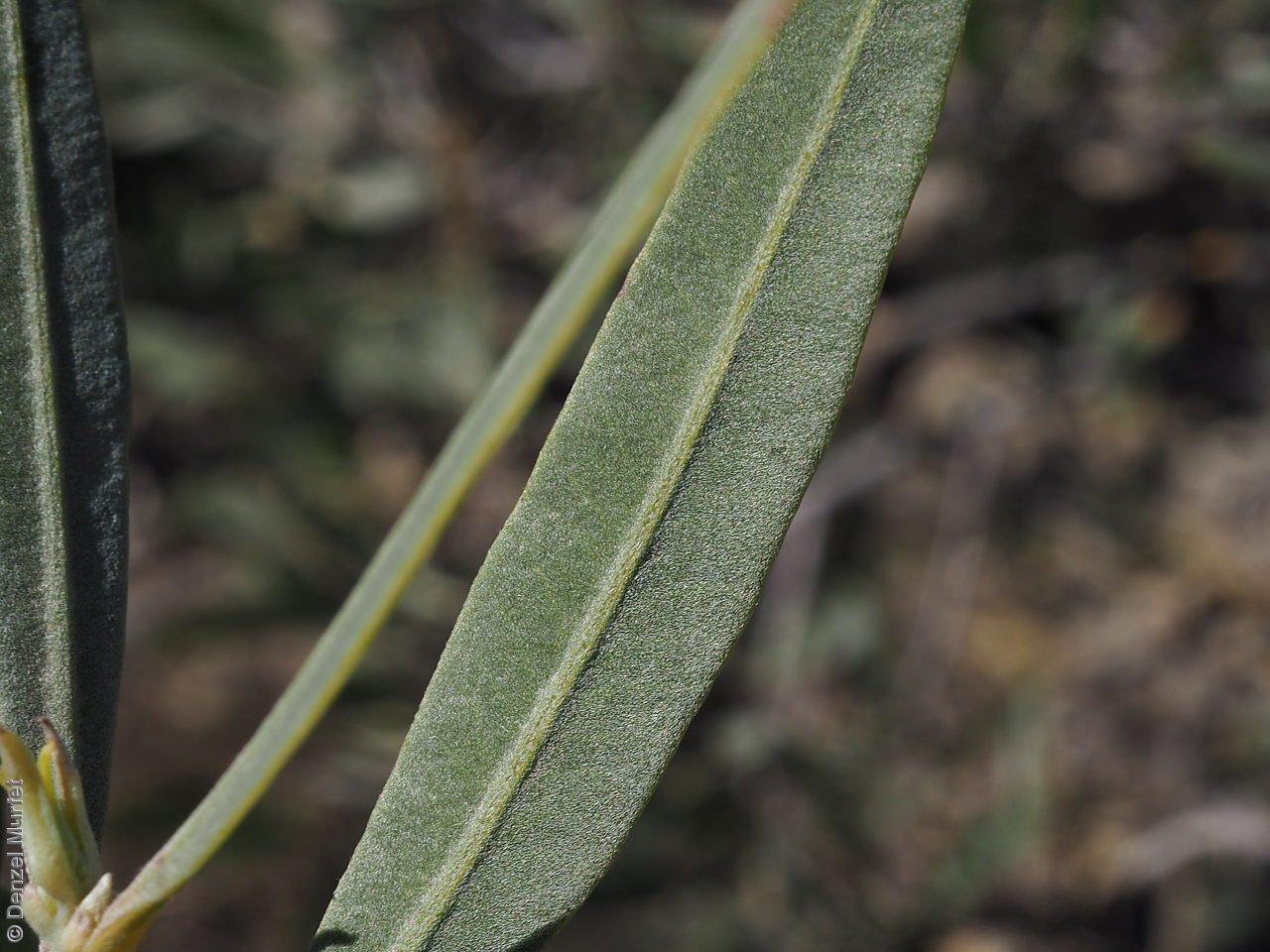
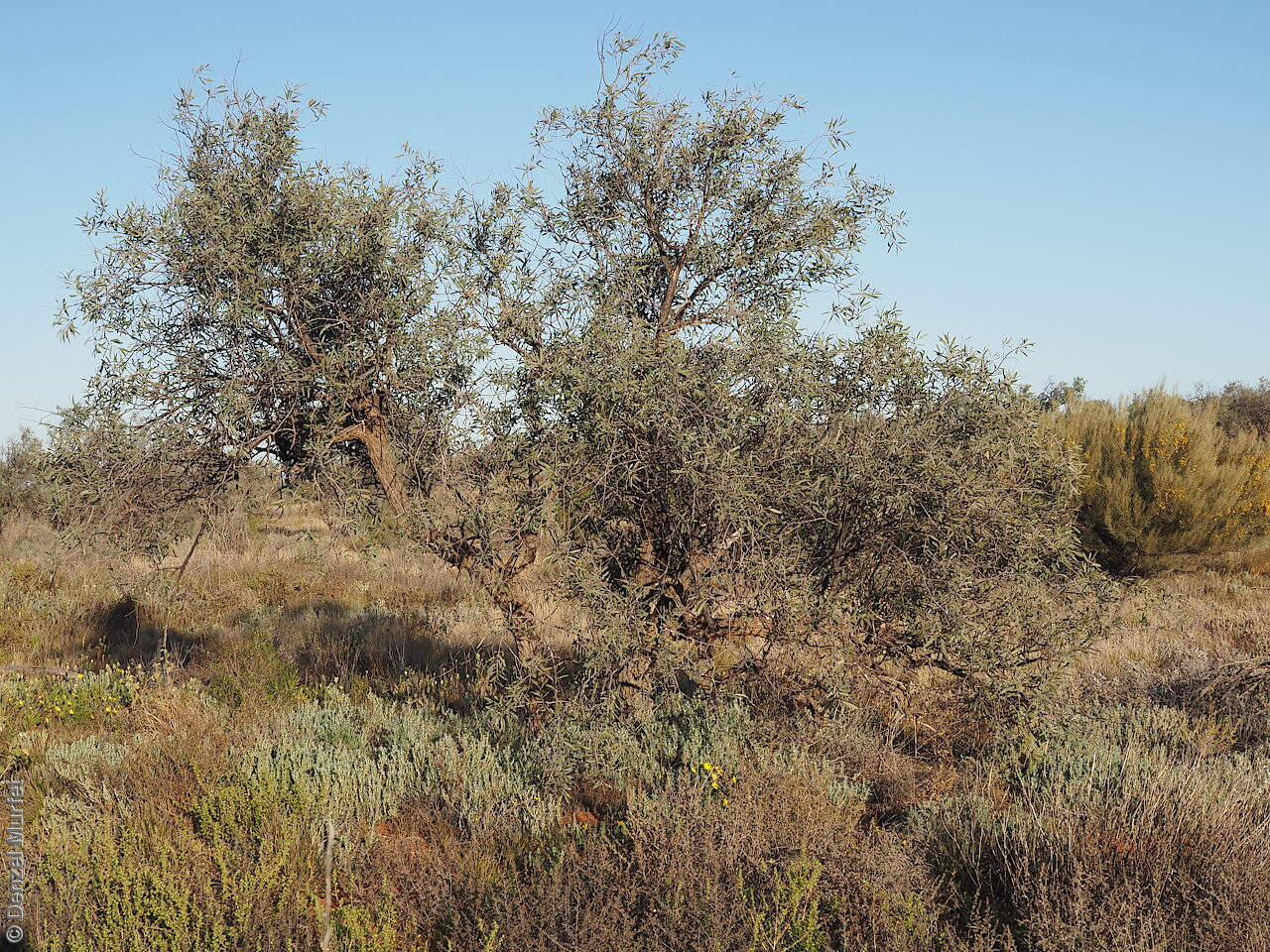
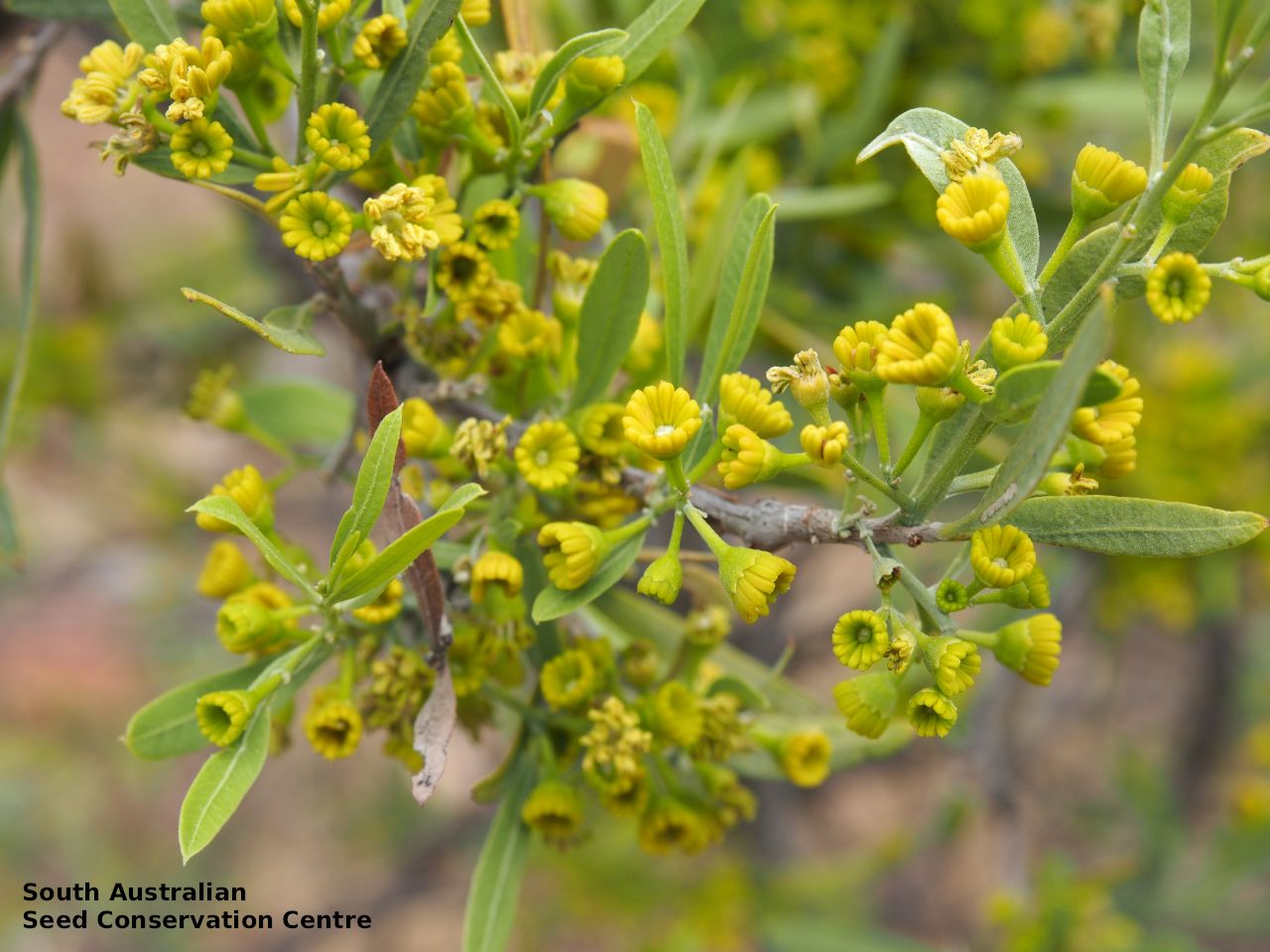
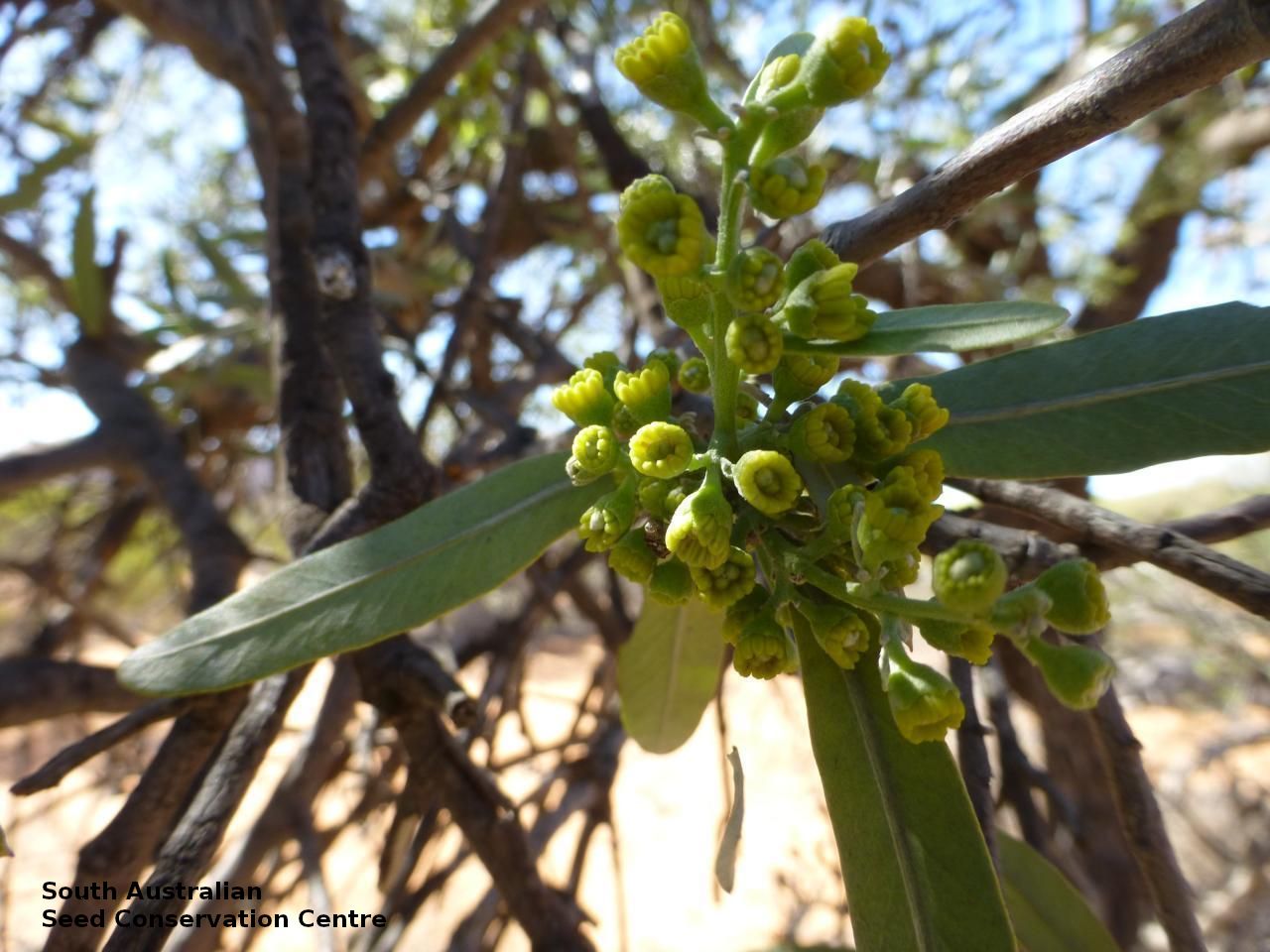
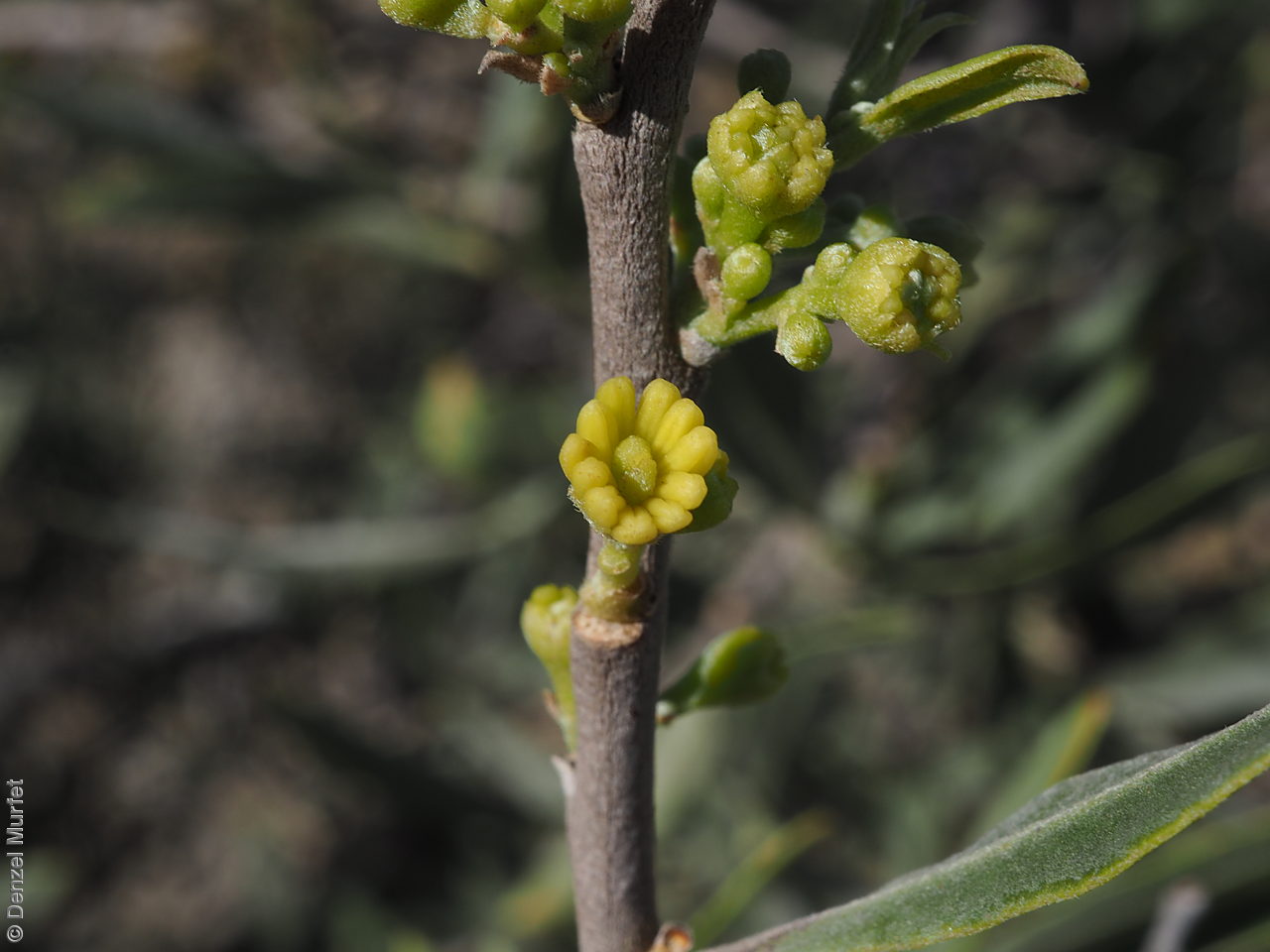
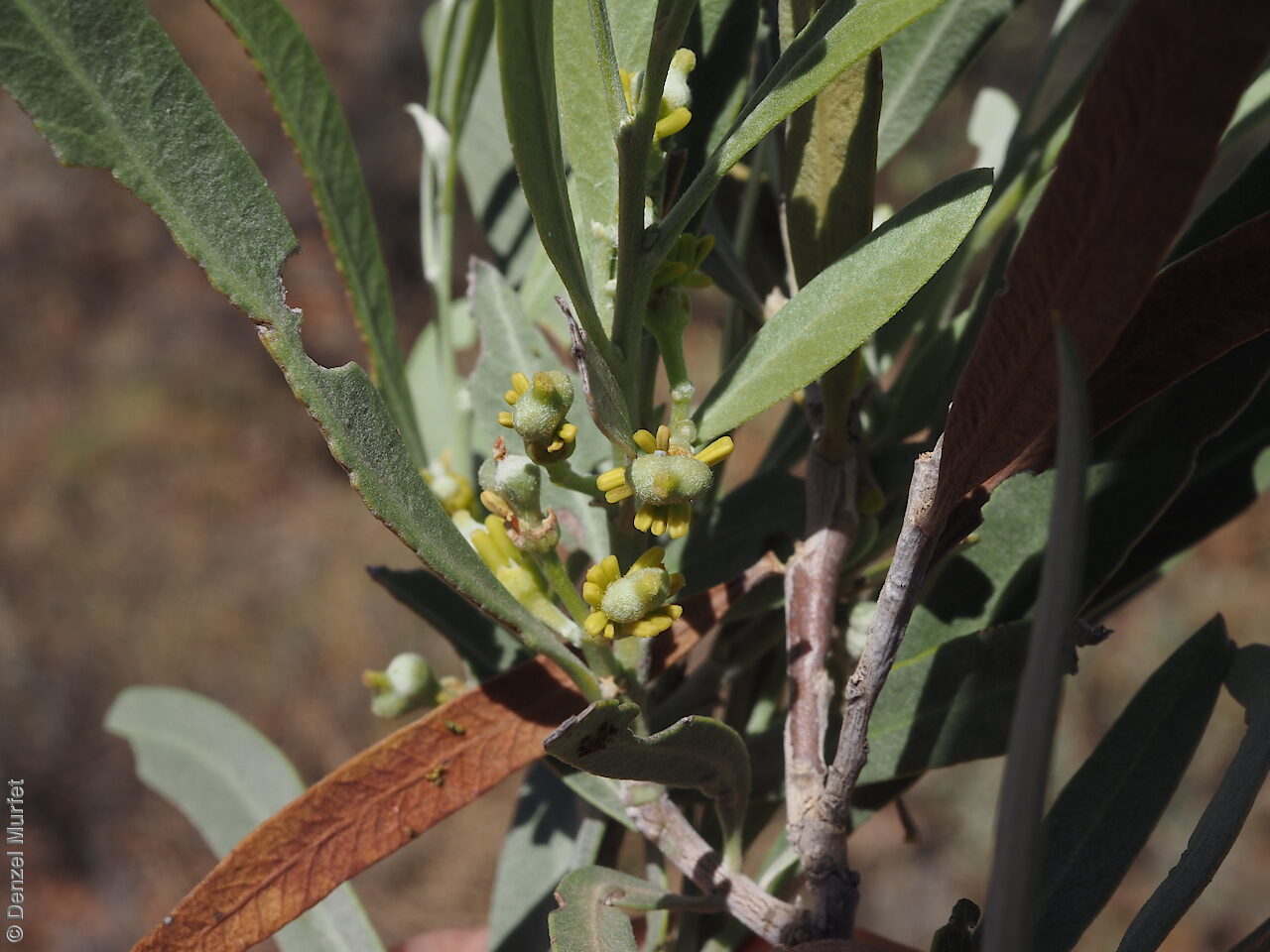
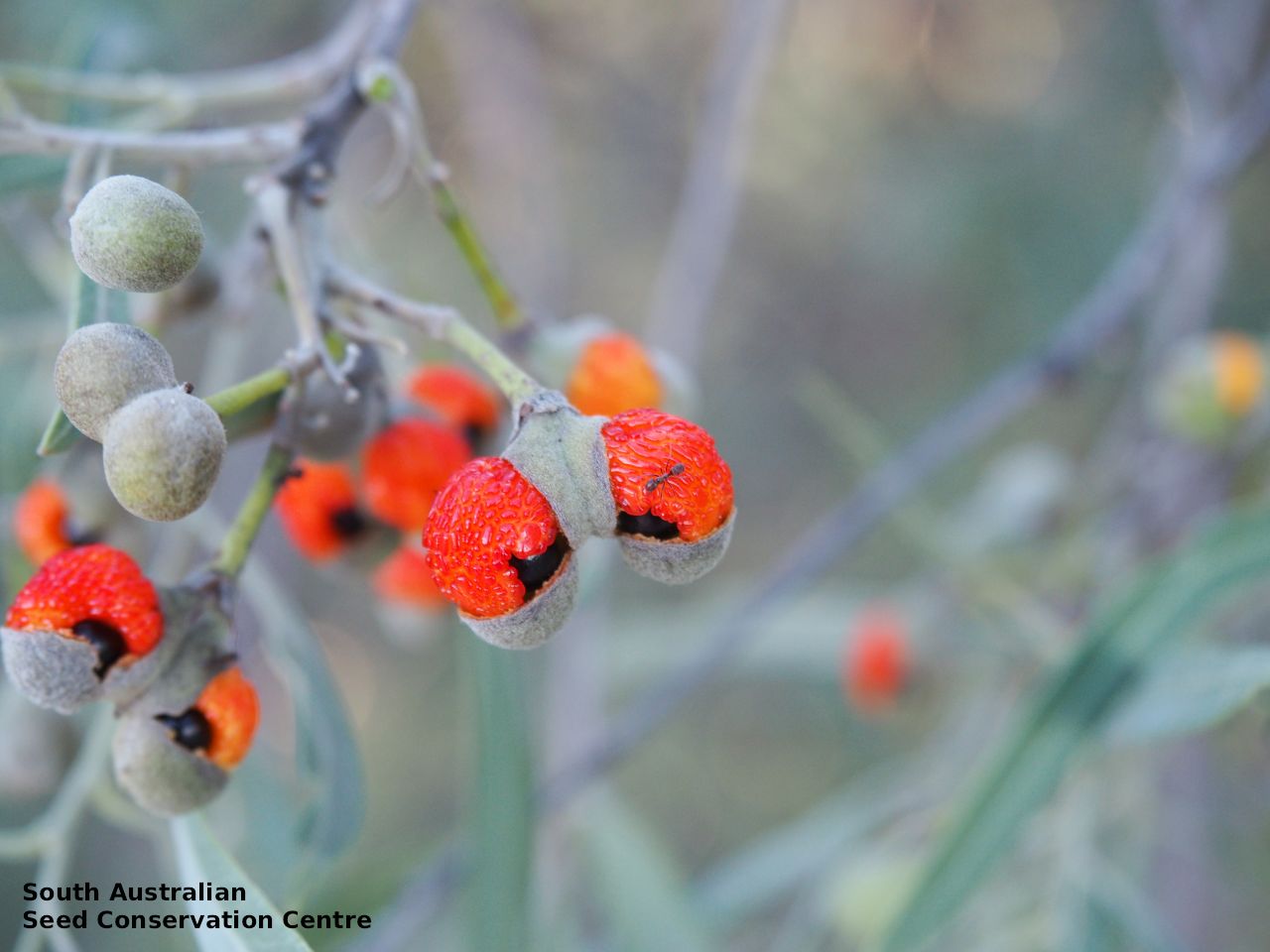
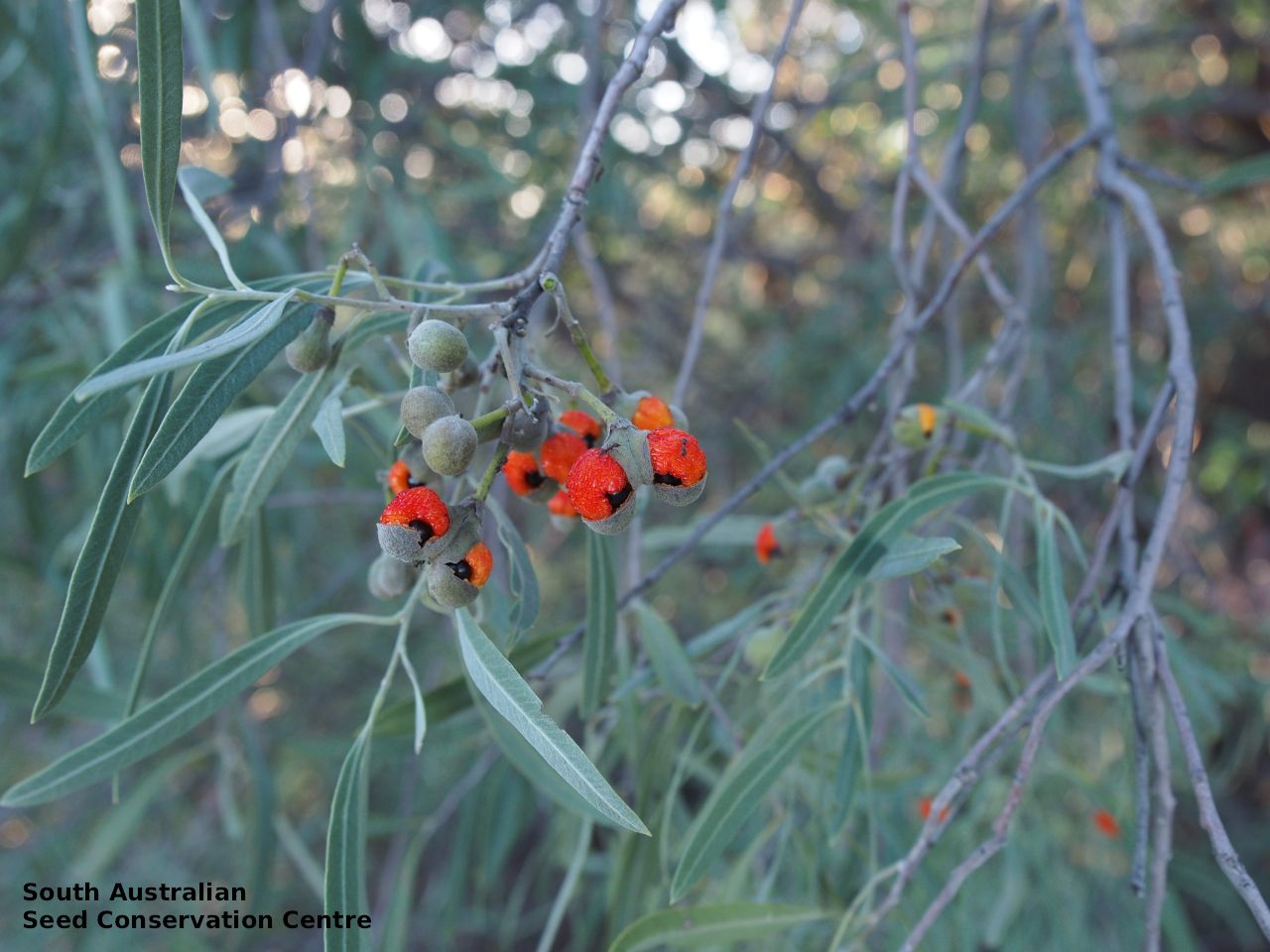
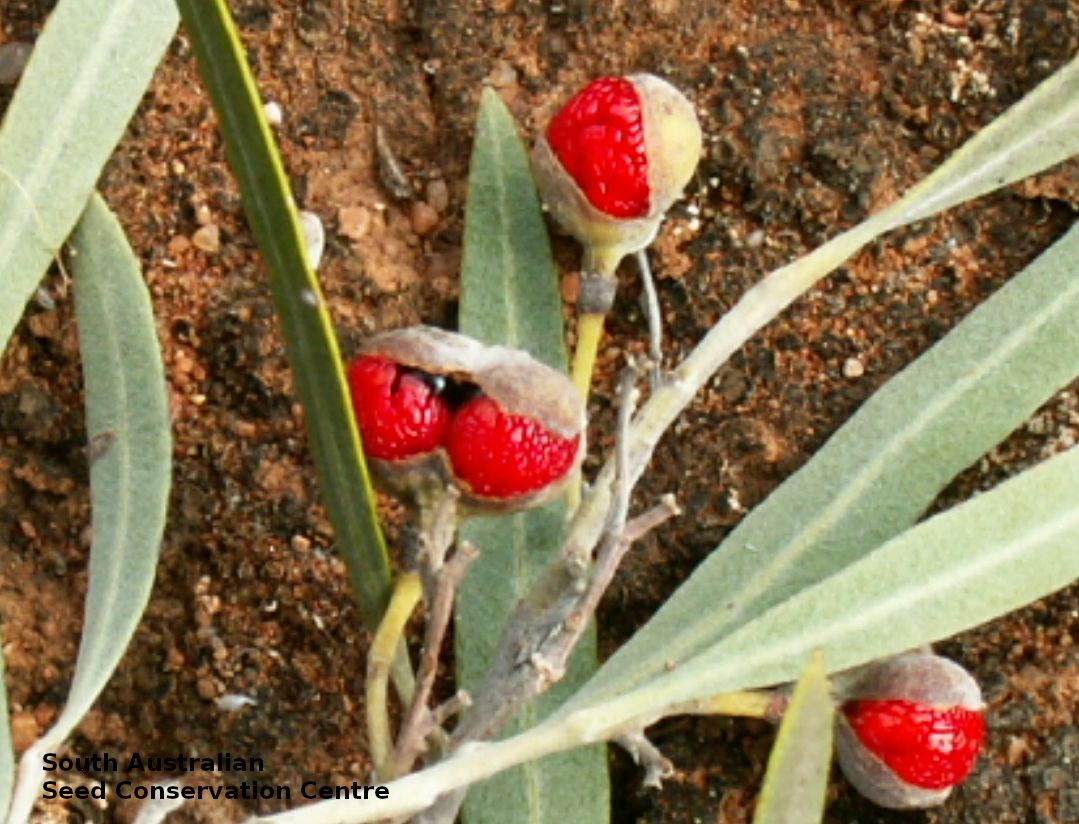
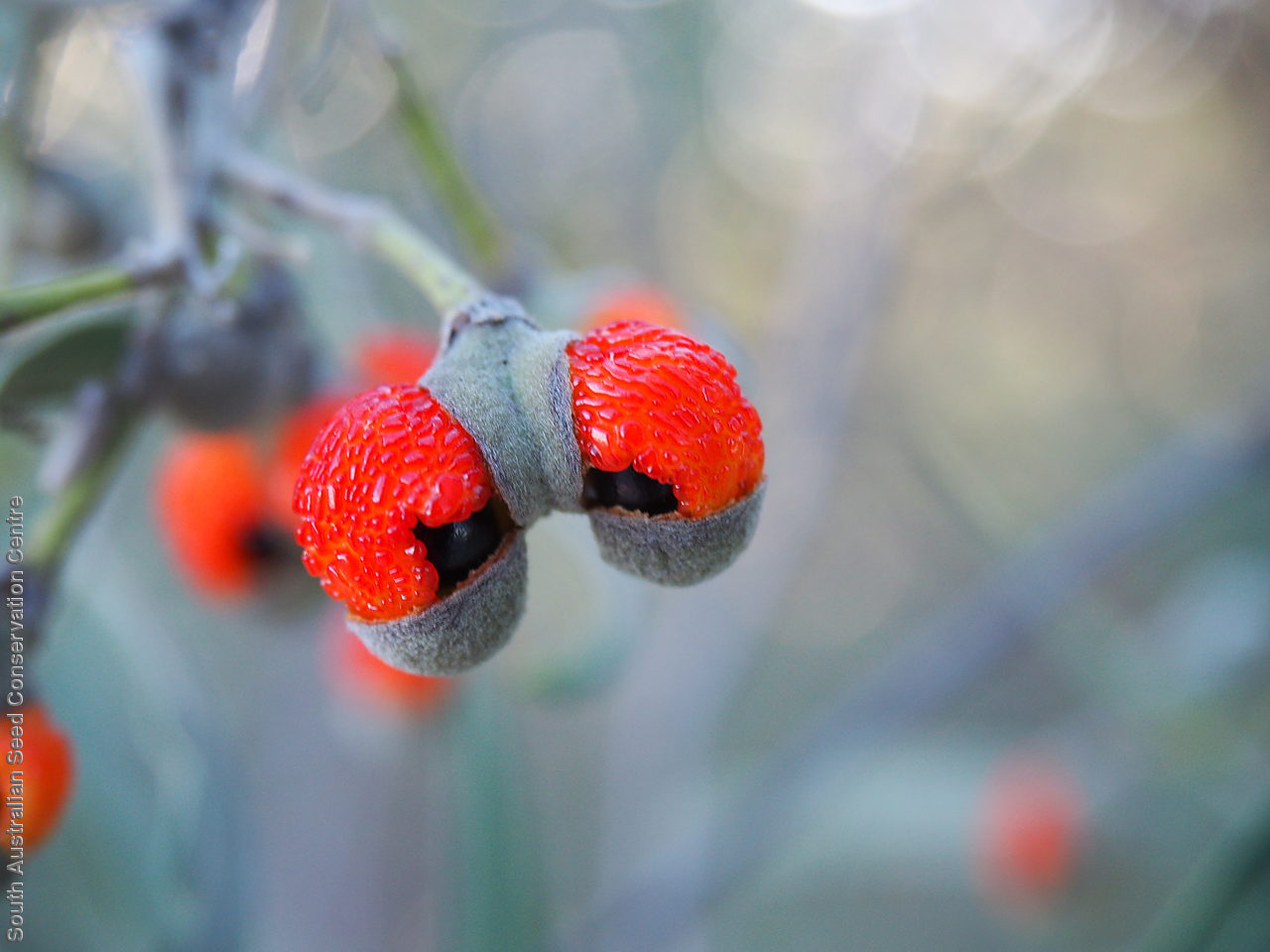
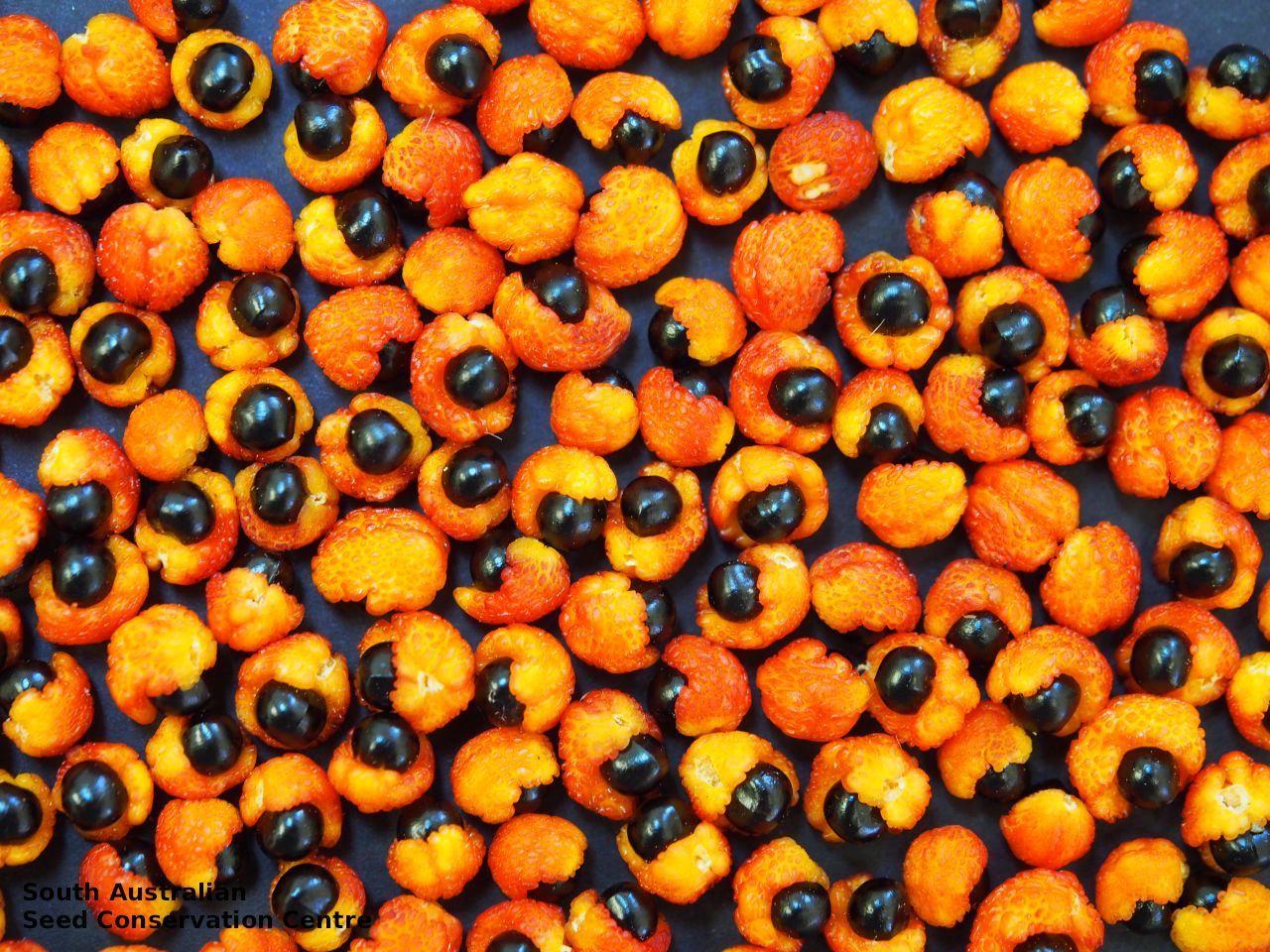
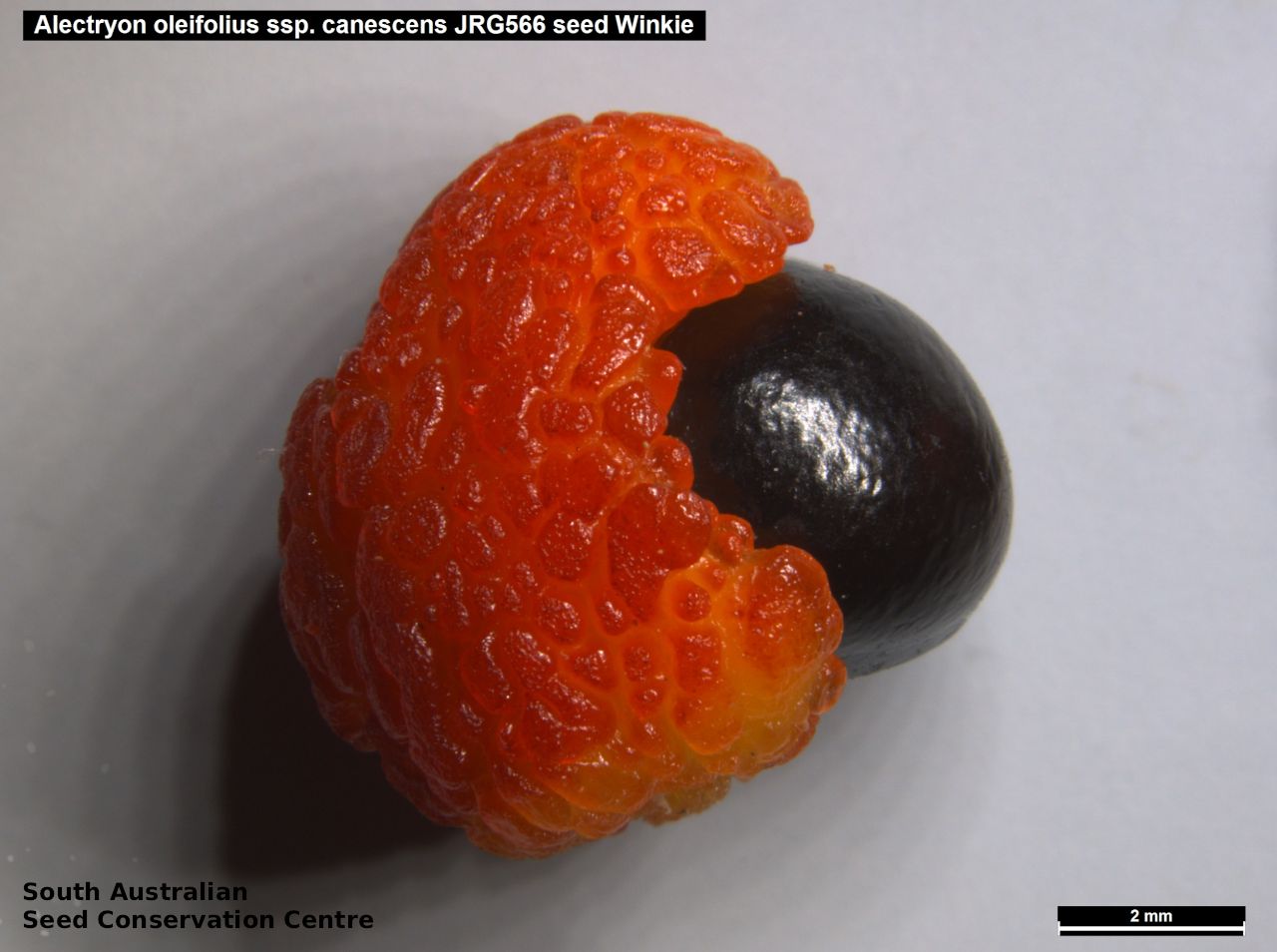
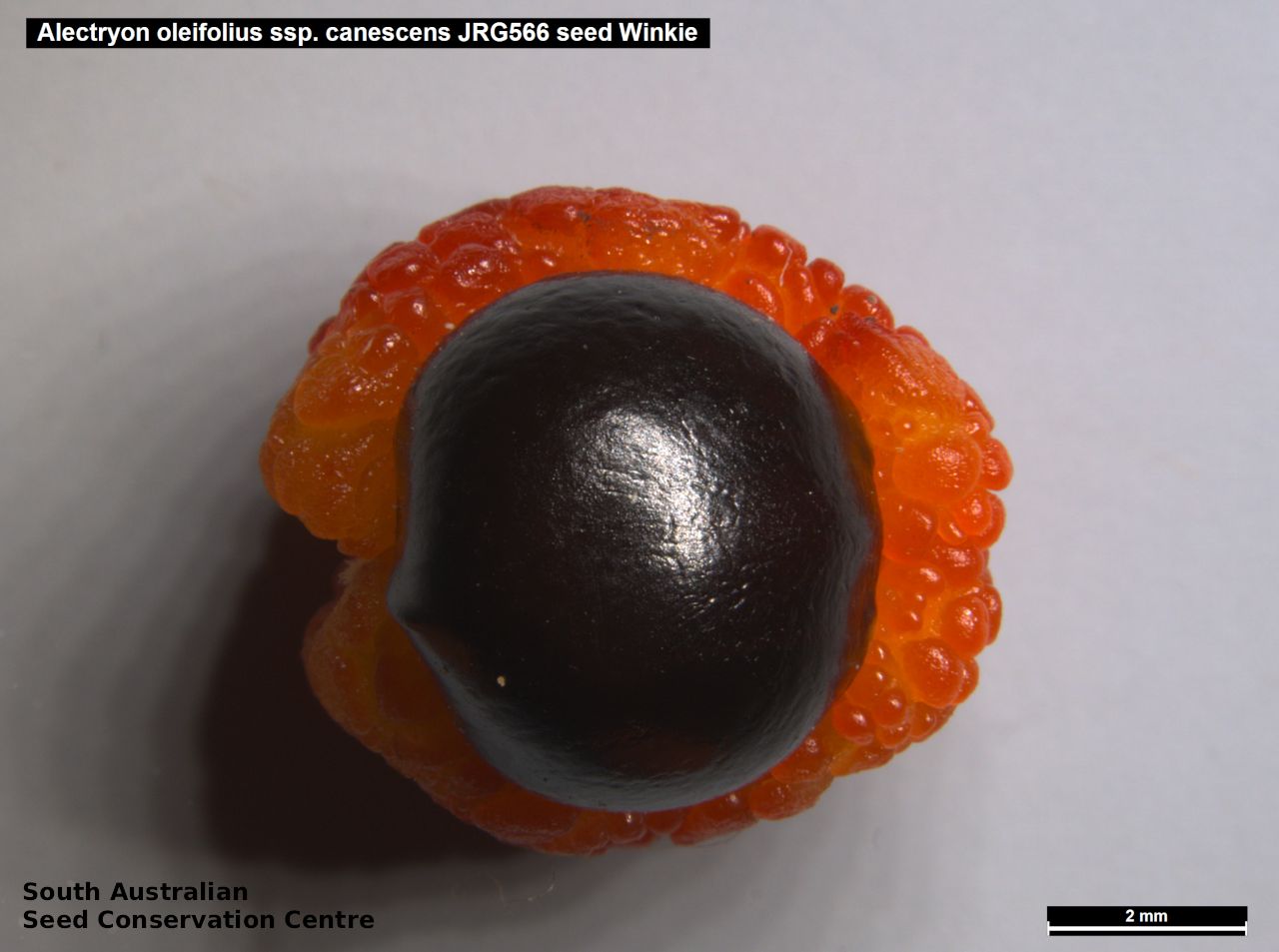


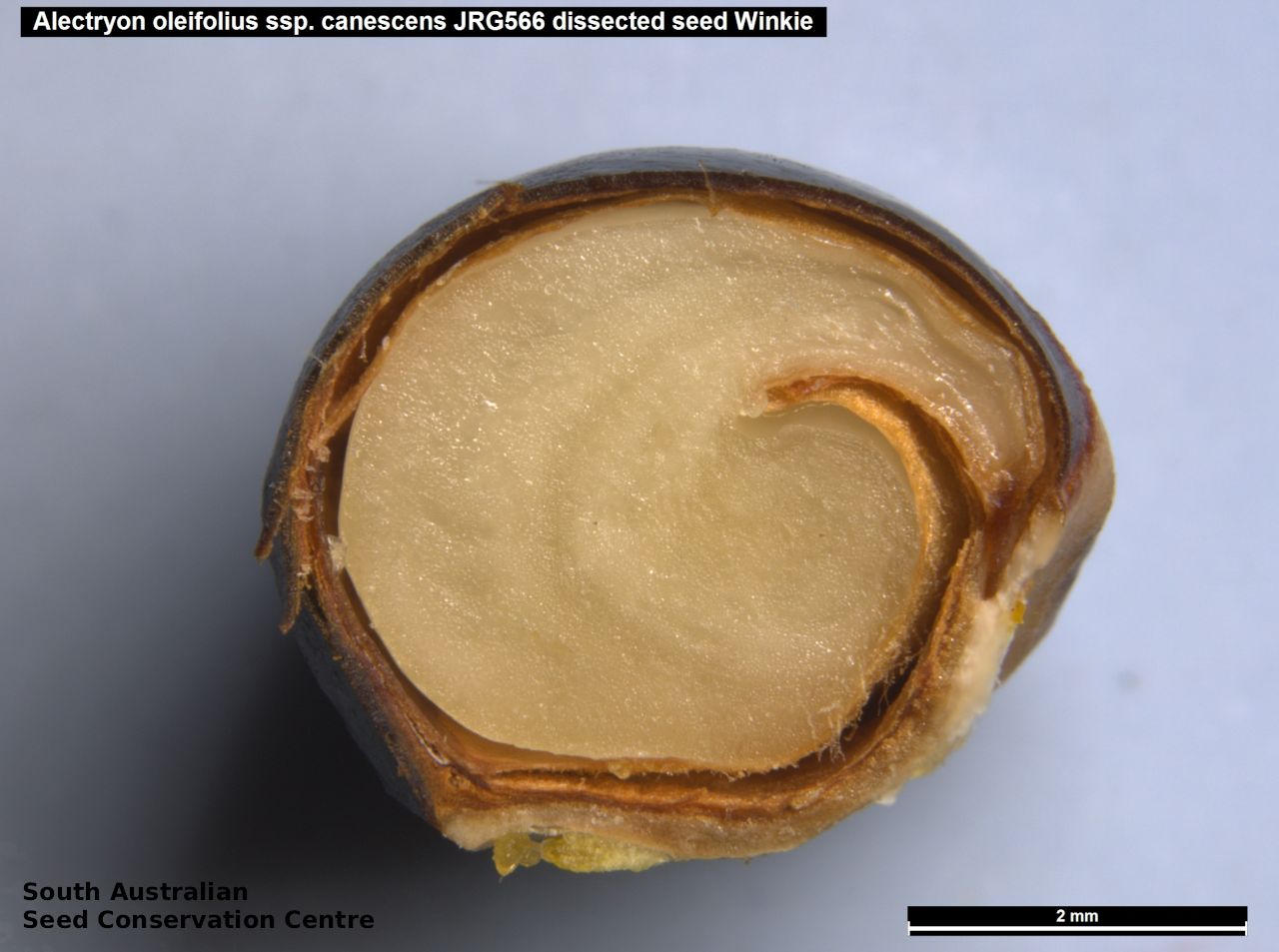
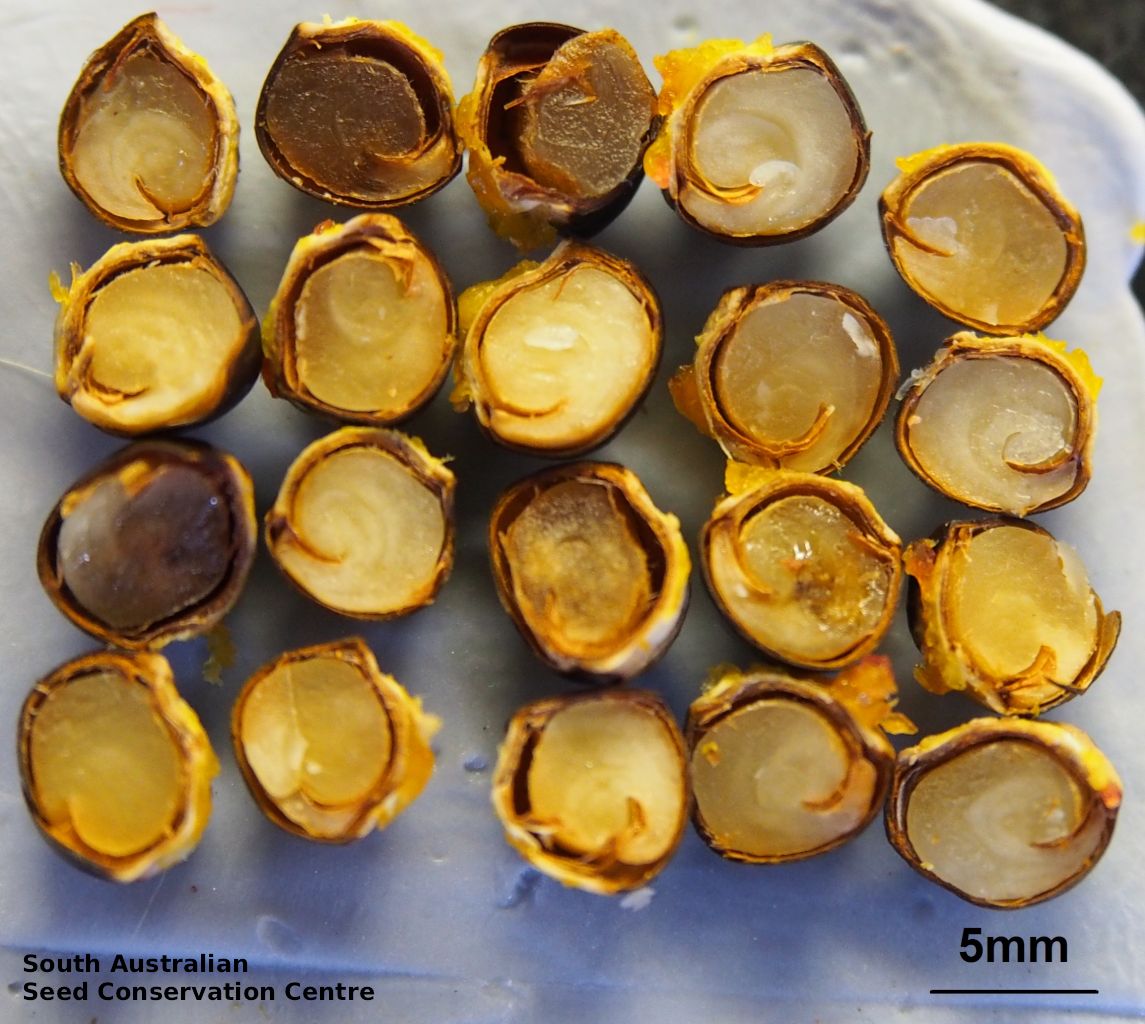
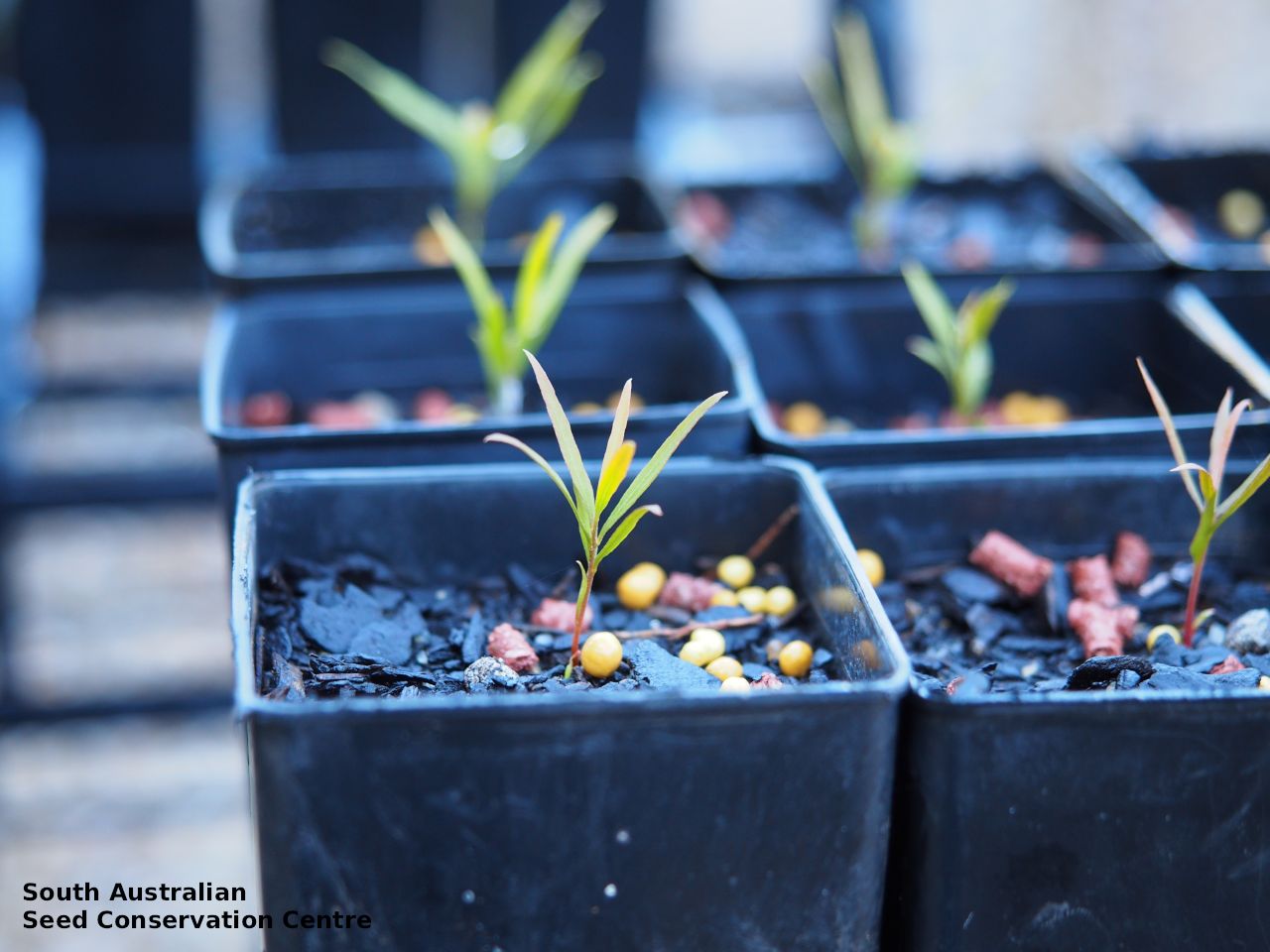
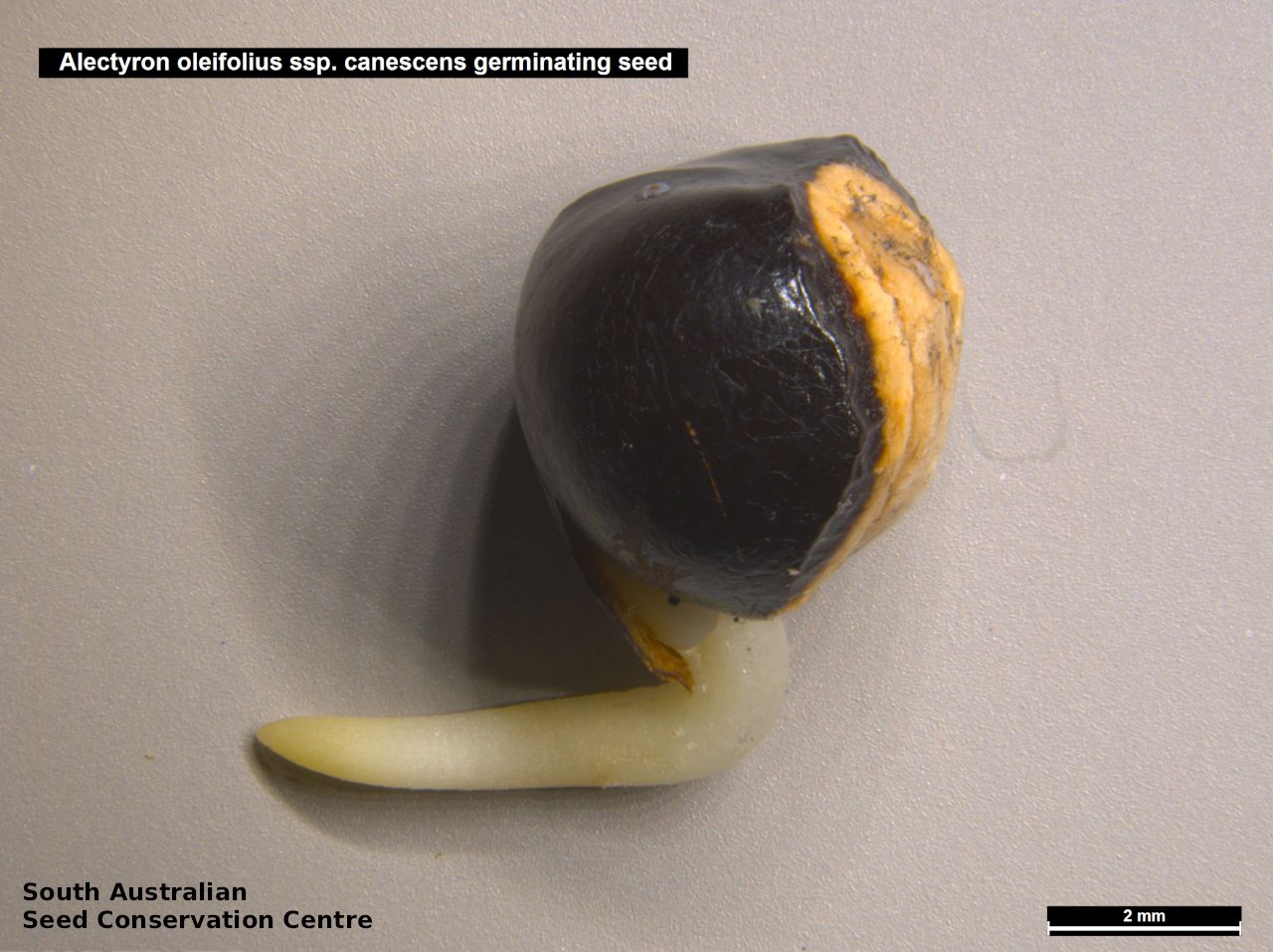


Botanical art
Prior names
Heterodendrum oleifolium var. microcalyx
Heterodendrum oleifolium var. macrocalyx
Heterodendrum microcalyx
Common names
Cattle Bush
Bullock Bush
Etymology
Alectryon from the Greek words 'alectryon' meaning rooster; possibly referring to the red aril on the seed being similar to a rooster's comb. Oleifolius for olive leaved. Canescens from the Latin 'canescens' becoming hoary, referring to the grey colour of the olive-like leaves.
Distribution and status
Widespread across South Australia except for Kangaroo Island and South-east regions. Common in arid and semi-arid areas on sandy soils, usually in open woodland or shrubland. Also found in Western Australia, Queensland, New South Wales and Victoria. Native. Common in South Australia. Common in other states.
Herbarium regions: North Western, Lake Eyre, Nullarbor, Gairdner-Torrens, Flinders Ranges, Eastern, Eyre Peninsula, Northern Lofty, Murray, Yorke Peninsula, Southern Lofty
AVH map: SA distribution map (external link)
Plant description
Small tree to 9m, branches and leaves usually pendant. Leaves simple, linear to narrow-elliptic or narrow-obovate to 15cm long and 2cm wide; green to grey-green. Inflorescences to 9cm long. Calyx irregularly toothed, bright green; petals absent. Flowering between September and November. Fruits are brown thin woody capsule to 8mm long and 15mm wide, usually 2-lobed. Seeds are hard, black, globular seed to 4mm long and 4mm wide with a large red aril. Seed embryo type is bent
Seed collection and propagation
Collect seeds between February and April. Collect mature fruits that have split with large red arils emerging and shiny black seeds. Seeds can also be collected from the ground. Place fruits in a tray or paper bag and the fruit will open and the seed will fall out. Use a sieve to separate the unwanted the material. Store the seeds with a desiccant such as dried silica beads or dry rice, in an air tight container in a cool and dry place. From one collection seed viability was high (92%). Seeds that are collected before the fruits split are likely to be immature and non-viable. The highly coloured, oily arils are likely to be removed by birds or other seed dispersers. Removing the aril significantly increased germination in a nursery experiment. In laboratory experiments, seeds with arils removed had higher germination levels in spring/autumn conditions than in winter conditions. Members of the plant family Spanidaceae may have physical dormancy imposed by the seed coat and require nicking or hot water treatment before germination will occur. Alectryon oleifolius seeds did not require nicking or hot water treatment. They have a small micropylar opening, observed when the aril is removed, which may allow the passage of water through the seed coat (see photo above). Germination research for this species was supported by SAMDB NRM.
| Location | No. of seeds (weight grams) | Number of plants | Date collected | Collection number Collection location | Date stored | % Viability | Storage temperature |
|---|---|---|---|---|---|---|---|
| BGA MSB | 1,625 (65 g) 1,625 (65 g) | 50 | 6-Mar-2006 | DJD420 Yorke Peninsula | 8-Aug-2006 | 30% | -18°C |
| BGA | 1,000 (145 g) | 2 | 1-Mar-2017 | JRG566 Murray | 1-Nov-2017 | 92% | -18°C |
Number of plants: This is the number of plants from which the seeds were collected.
Collection location: The Herbarium of South Australia's region name.
% Viability: Percentage of filled healthy seeds determined by a cut test or x-ray.